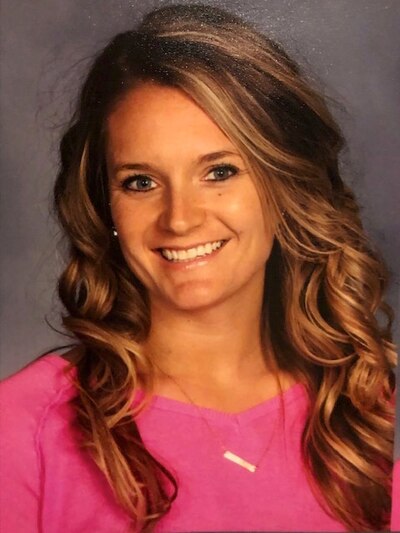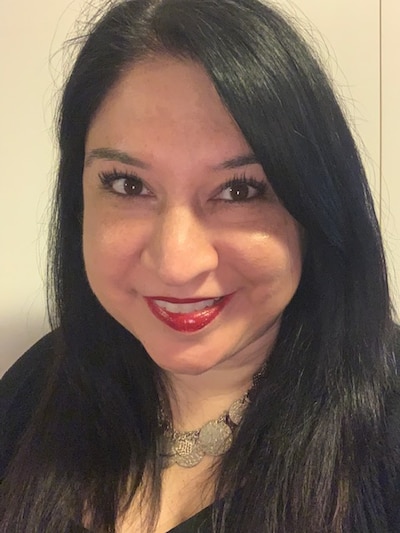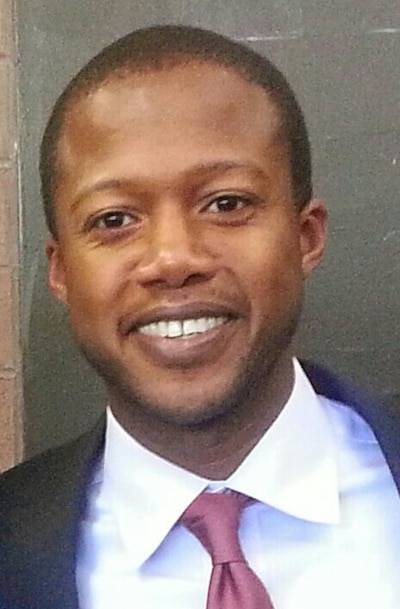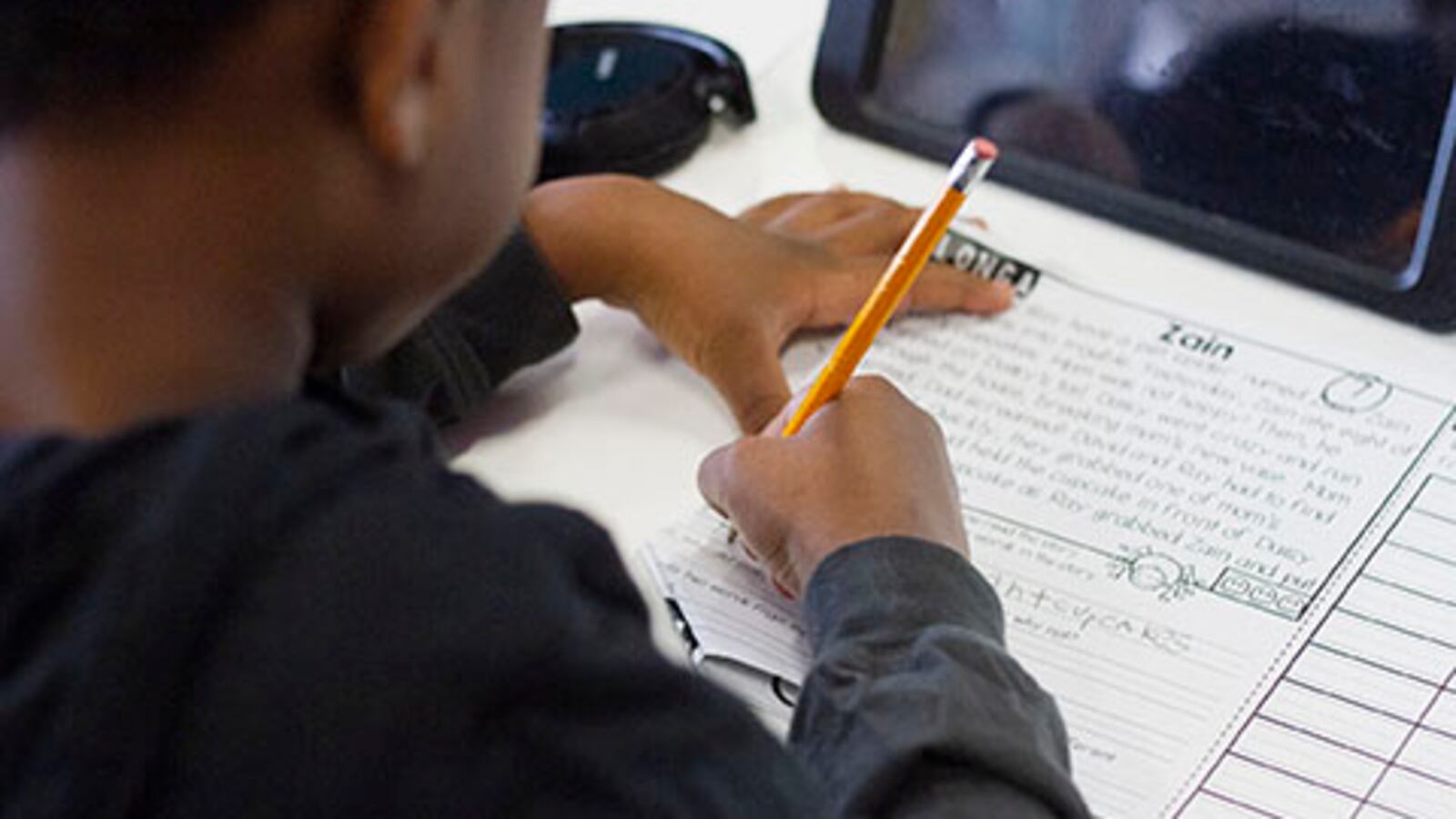Chicago is embarking on a $135 million curriculum redesign and leaning on committees of teachers to help. But which lessons resonate most with students? Chalkbeat asked five Chicago finalists for the 2020 Golden Apple Awards for Excellence in Teaching — which recognizes educators for their teaching practice, curriculum selection, and impact on students — to tell us about their most powerful lesson in their classrooms right now and how their classes respond.
Here are five of the responses, edited for length and clarity.
Want to tell us about a powerful lesson of your own or weigh in on the district’s curriculum redesign? Take our survey below. Your responses could inform a future story.

Kelsie Mizel
Teaches fifth grade English, science, social studies, math, and social and emotional skills at Wildwood IB World Magnet SchoolA lesson called “What About Us?” sheds light on racial and gender inequalities that existed around the American Revolution. I show a slideshow with Pink’s “What About Us?” song playing in the background. The first half consists of portraits of historical figures from the colonial era. I ask questions like, “What did you notice?” or “Was anyone missing from the slideshow?”
Students note the absence of women, African Americans or Native Americans in the slideshow. They often make connections and references to other historical periods and even the present day. Then I show the second half of the slideshow which includes pictures of influential women, African Americans and Native Americans, also from the colonial era.
I end by asking, “Was there liberty and justice for all Americans in the 1700s? Is there liberty and justice for all now?”
I like this lesson because it doesn’t teach a story from one perspective. Growing up, I always felt that we learned about the same people who shaped America. It is important for students to learn from multiple perspectives and to be inclusive of all cultures.

Tolulope Solola
Teaches sixth through eighth grade science and social science at Frazier International Magnet School
My students love the genetics unit. They learn about what makes them unique. Middle school students’ worlds revolve around their egos, so students are interested in learning more about what their genes say about who they are. We discuss how genes are influenced by both environmental and genetic (nature vs. nurture) factors.
In one lesson, students use a diagram to explain fraternal twins who look different. In one example, two African American parents gave birth to a set of twins. One had lighter skin, blues eyes and blond hair and the other had darker skin, brown eyes and dark brown hair. Students find this a fascinating phenomenon.
I teach majority African American students. Students find out what truly makes them unique and love themselves more for it. This unit touches on having pride in their melanin — skin color — and also forces them to inquire more about their ancestry and inherited genes be they dominant or recessive.

Ruth Muhlberger
Teaches sixth through eighth grade math and eighth grade social and emotional learning at Belmont Cragin Elementary
Social and emotional learning is a part of the Belmont Cragin culture. The older students become, the more self-conscious they become. I have found myself having to be a bit more creative in sparking discussions in the classroom. I teach lessons using TED Talks and other videos and have found that even if I can’t get everyone to participate in the whole class sharing time, I can get them to participate in the smaller group setting.
When I asked my students to share what lessons resonated with them I was surprised to have unanimous feedback. Every group wrote about the Golden Rule, which are videos created by Brooks Gibbs, an award-winning resilience educator who teaches students, parents, and teachers how to become emotionally strong and resolve conflict. They teach students to treat others as you want others to treat you.
The lesson led to a great discussion. At the end of our conversation, the majority of students were able to see the value in being kind to everyone. They understood that kindness can help diffuse a situation.
Students learn the foundation of what it means to be a more engaged, thoughtful, empathetic, respectful, responsible and compassionate citizen. Students’ involvement in social-emotional learning is laying the foundation for them to be able to make good decisions on their own. In class we discuss how their choices impact their future. We focus on “self” so that students can be able to then make a difference in the lives of others — it has to start with self. This lesson definitely caused students to think about behavior and choice making.

Michael Stewart
Teaches seventh and eighth grade math and social studies at LEARN South Chicago
One lesson that resonated with my seventh grade students took place when we simulated buying and financing a car to understand and solve simple interest problems. The goal was to deepen the students’ understanding of problem solving using percentages. Students used the simple interest formula and a table to demonstrate the proportional relationship that exists between the number of years, principal and interest.
Students were given the price of a car ($30,000) and three loan scenarios involving down payments, monthly payments, and duration of loan. They had to choose the best loan and provide reasonable explanations for their choice.
Students recognized that while the monthly payments for the loans with longer terms were smaller, the overall interest paid on the longer loan was higher when compared with loans with shorter terms. The scenarios were set up to illustrate how different factors affect the total amount that is paid over time. For example, higher down payments or initial investments shortened the length of loans and resulted in lower interest rates and less interest accrued. Conversely, lower initial investments resulted in longer loan repayment periods, higher interest rates, and more interest accrued.
This required parents to share their ideas and experiences with loans with their children. We also discussed predatory loans and high interest rates that disproportionately affect lower-income groups.

Paloma Salcedo
Teaches fourth grade at Brighton Park Elementary School
One lesson that resonated with my students centered around the book, “Stef Soto, Taco Queen.” Many students enjoyed the text because it featured a very relatable character who learned the importance of family, friendship, and honesty.
I created lessons in English and Spanish on how to create a positive and welcoming community. The lesson that had the most impact taught students that good readers can make meaningful connections between the text and their lives.
I also used the lesson to explain the importance of friendship and the feeling of wanting to belong and to connect to others.
This lesson prompted students to think critically: What is a friend? What do they look like, sound like, etc.? This lesson also helped bolster the lessons taught in our social and emotional learning program, where students learn they have to listen to others with attention if they want to build friendships.
My goal was to have students reflect on whether they have been good friends and what they can do to build new friendships at the beginning of the school year. I also wanted to create a safe and warm environment where the students would feel more comfortable with sharing their thoughts with their partners and understand that they need to respect everyone’s perspectives and voices in our classroom.

